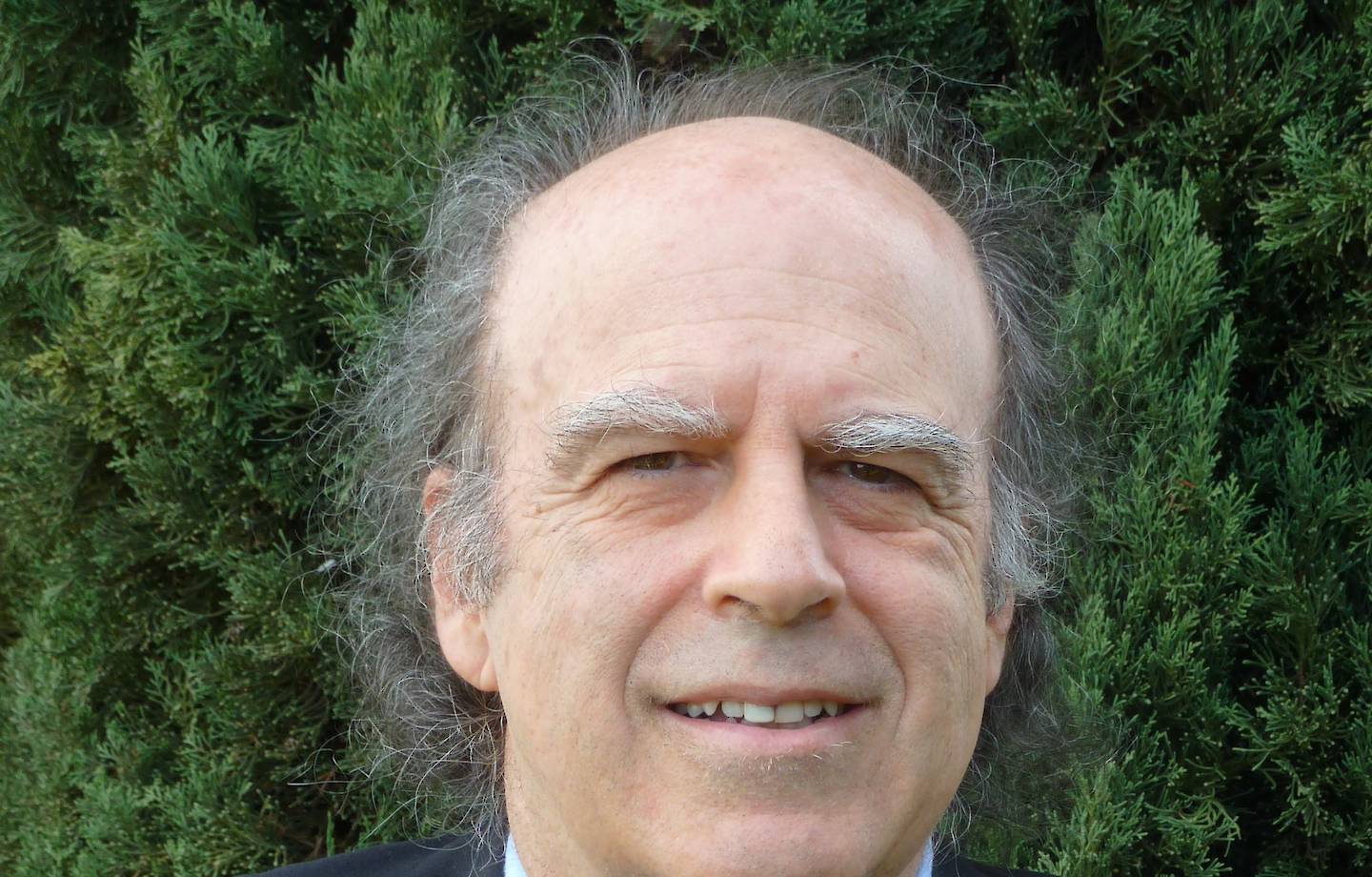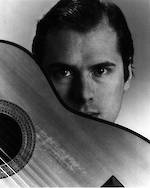The Guitar Music of Robert Pollock
A couple things are swirling around my brain--things to do with Robert Pollock's guitar music.I try to lay them to rest here.
Furious Artisans will soon release a compilation of music by Robert Pollock. It includes this guitar music:
2--Cygnature Piece
I. Mysteriously
II. Dance
3--Entertwined
4--Romance-Fantasy
When Pollock writes for instruments he channels the character of the instrument--its character acquired throughout its entire history--then he writes in the mask of that character. This point is made so clear by his recent banjo & piano piece -- a shocking burlesque.
His guitar music is pentatonic, taken from the music we associate with the guitar, but also from the guitar's tuning.The bottom four strings of the guitar make a chord. That chord is the heart of all four works on this upcoming compilation.
We can use Babbitt/Rahn language and call it an 0279 chord. George Walker called it "quartal harmony" because he was in the Barber/Hindemith universe when he was young. Robert Pollock started out as a Princetonian, so we can stick with "0279".
Part I - Tone Clock
In Metaphor we hear an opening phrase with 3 chords, then four chords and a tag. In this excerpt of the opening we can see the three descending chords recurring in measure 11.
It's an axiomatic Tone Clock phrase.

Metaphor explores Peter Schat's Toneclock principles where 0279 is "steered" by 4, transposed through the augmented triad. The first three chords of Metaphor descend by major thirds (4 semitones); The [0279] chord completes the entire chromatic when transposed by major thirds, through the "4-cycle". The process is condensed in the first three chords of Metaphor.
In Entertwined the harmonies in Metaphor are elaborated. We hear a thing three times, followed by a cap. 3-part phrases, devilshly clever near rhymes of each other, followed by a 4th thing.
Entertwined's phrase rhythmn:
3 + 1 episode 3 +1 episode, etc.........
The 3 part rhythm is a baroque deception. It breaks up the major third transposition, the first leg of the Tone Clock symmetry, into 1, followed by 3 (a transposition up a minor second, followed by a transposition up a minor third.)
A 0 -- A 1 -- A 3 -- B cap -- episode, etc.
The first three gestures begin and end a major third apart, an elaboration, ascending instead of desceding, of the major third progression in Metaphor. But each gesture is compounded by hints of that major third transposition. The Tone Clock principles are expanded and condensed at once. Structural butresses encrusted with multiform elaborations.
Two parts in the opening bar are clearly semitone transpositions of each other, but if we speak of interval cycles, they can be thought of as a major third apart.
(A funny thing about open cycles--should we speak of transpositions or of different swaths cut from the contiuum?.)
Can we say the crunch on bar two is a signature of 0279 and its major third transposition? So these local details foreshadow the destiny of the final landing in bar 5; the details point to Tone Clock moves through the phrase.
Does measure 7 feel like a return to the opening chord? Maybe think of the octave Cs as the signature of the arrival at the 3rd leg of the symmetry -- [ C F Bb Eb ]? Then the accented D in bar 7 is a signature of the return to the O collection, never mind the B, the rest of the pitches are there-- [ E A D G ].

Measure 5 is a major third traspostion of measure 2.
This all has to do with Pollock's exploration of Tone Clock prinicples of the Dutch composer Peter Schat. The central harmony can be transposed three times (by major third) before arriving back to where we started. We hear the three-step process very clearly in Metaphor. Metaphor leaves exposed the three-part fracture lines is an eleget structural minimalism, like leaving structural beams exposed.
In Entertwined Schat's Tone Clock symmetry unfolds in a distinctive
3 + 1, episode rhythm.
In Romance-Fantasy the Tone Clock symmetry is stretched out over a still longer time span.The three legs of the symmetry are kept much more distant from one another in time. We hear big, beefy sections that circle back to the central harmony, often building up a great deal of pressure-cooker steam into the return. Pollock has employed entirely different speeds for his musical traversal of the 3-part symmetry. The three pieces explore the range of the Tone Clock principles, and the find brilliantly inventive ways of disguising the symmetries. Metaphor serves as a reference, where the symmetries are laid bare.
Part II - Gentleness
Next, I noticed the gentleness, the softeness of whole tone harmony as a foil for 0279 in Cygnature Piece. The big moments in Cygnature Piece are breakings of the whole tone lock on the harmony. Pollock is clearly sensitive to the gentleness of that hold.
The break out of whole tone into 0279 at the end of the first movement, into the closing octaves, is very simple and powerful. That is preceded by a brilliant dodge of the break getting into and out of the ostinato. Those dodges make the ostinato serve clarly as a prolongation of the return.
It's worth mentioning that Cygnature Piece can evoke memories of Copland and even Ferdie Grofé, but Pollock's modalities are so particular, his approach to harmony is so distinct, he manages to keep those associations in check. No doubt, we can envision modernist purists who disagree. Pollock's Cygnature Piece is a tonic for their malady.
Whole tone harmonies are all over Metaphor and Romance-Fantasy.
In Romance-Fantasy, we catch on sooner or later that whole tone harmonies are a midphrase thing, a prolongation of the inevitable return of the central harmony, the 0279. Octotonic harmonies are also a phenomenon of the mid-phrase or mid-section. There is an octotonic second theme 1-4-3-0, for example -- A -C-B-G# in measures 28 & 29.

In Cygnature Piece the whole tone scale is less a mid-phrase phenomenon and more like a secondary theme group.
In Entertwined there is a 3-cycle diminished scale (aka octotonic) theme that further disrupts the 3+1 phrase rhythms. The diminished 7 chords prolong by changing the Schat rules, reorieting intervals to a different knap.

0279 is not a subset of the whole tone! It is not a subset of the octotonic, not a subset of the augmented scale. It is a signature of the diatonic hexachord.
Conclusion
In the ripest final decades of American modernism, we arrive back in the ethos that I call the op. 9 ethos--the Schoenberg's op. 9. ethos in which the theme is not associated with a key, a theme is a color, a harmony. This works best when familar harmonies are not avoided. Diatonic harmonies are what we know. They light up our brains. The liberation of dissonance finally called for the rescinding of the ban on consonance, of diatonic harnony.
Modernist music got into horrible habits and started to become a dull grey mass where all the colors bled into one another. Pollock's guitar harmony is so bright and grounded that negotiating through diverse or complementary colors requires a great deal of skill and experiece. These pieces show the influence of Schat's Tone Clock taking Pollock in surprising directions.
Please let me know if there's something that should be added or corrected here.
END

